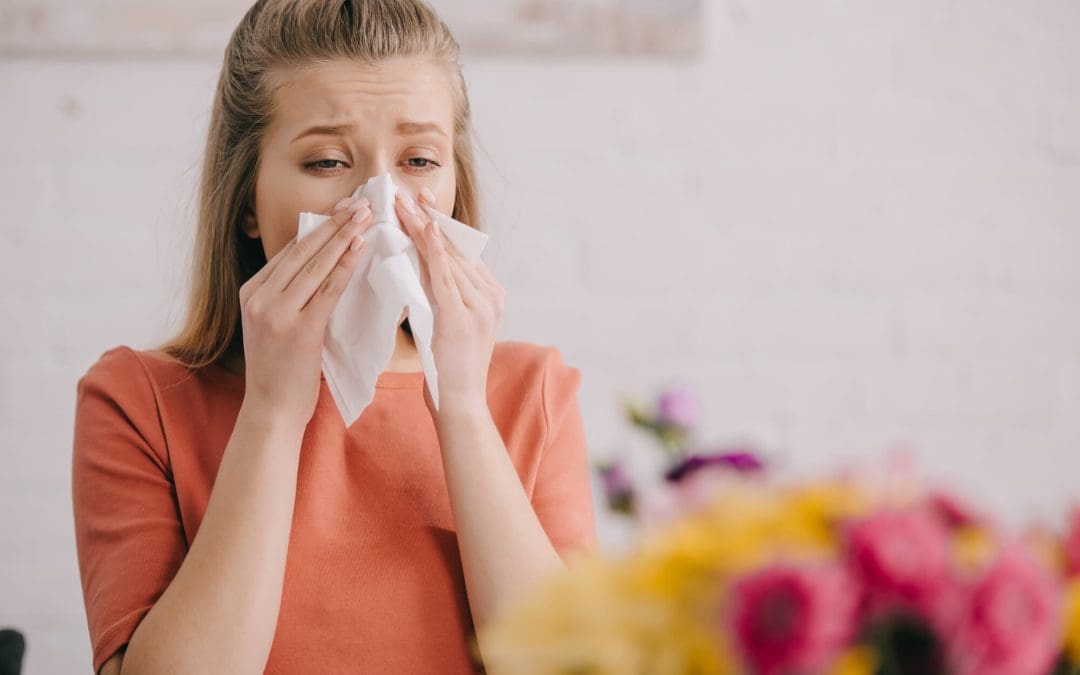If you or someone in your family struggles with allergies, you know how frustrating it can be to deal with constant sneezing, itchy eyes, and congestion. The good news is allergy-proofing your home is simple. By making a few simple changes, you can breathe easier and keep allergy symptoms under control.
Allergy-Proofing Your Home: Keep Your Indoor Air Clean
The air inside your home may be filled with allergens like dust, pet dander, pollen, and mold spores. Investing in a high-quality air purifier with a HEPA filter can help trap these particles and improve air quality. Regularly changing your HVAC filters is also essential. Look for filters with a high MERV rating to catch smaller particles and replace them every few months.
Another easy way to keep the air fresh is to open windows and let in fresh air when the pollen count is low. On high-pollen days, keep windows closed and use an air conditioner with a clean filter to maintain circulation without letting in outdoor allergens.
Control Dust and Clutter
Dust is a major trigger for allergies and tends to accumulate in cluttered areas. Reducing the number of decorative pillows, knick-knacks, and other clutter in your home makes dusting easier. When dusting, use a damp cloth or a microfiber duster that traps particles rather than spreading them into the air.
Vacuuming frequently is another key step in managing allergies. Use a vacuum with a HEPA filter to ensure allergens are trapped rather than recirculated. Carpets and rugs can hold onto dust and dander, so if allergies are severe, consider switching to hardwood or tile flooring.
Wash Bedding and Upholstery Often
Your bedding can be a hotspot for allergens like dust mites. Wash your sheets, pillowcases, and blankets in hot water at least once a week to kill mites and remove allergens. Encase mattresses and pillows in allergen-proof covers to prevent dust mites from settling in.
Upholstered furniture can also collect allergens, so it’s important to vacuum couches and chairs regularly. If possible, choose leather or vinyl furniture, which doesn’t trap allergens as easily as fabric.
Reduce Pet Allergens
If you have pets, their dander can trigger allergies. Regularly brushing and bathing your pets can help minimize shedding, and keeping them off furniture and out of bedrooms can reduce allergen buildup in areas where you spend the most time.
Washing pet bedding frequently and using an air purifier in rooms where pets spend time can also make a difference. If allergies are severe, consider designating certain areas of the home as pet-free zones to limit exposure.
Prevent Mold and Mildew
Mold spores can cause serious allergy symptoms, so keeping moisture levels in check is crucial. To prevent mold growth, use a dehumidifier in damp areas like basements, bathrooms, and kitchens. Fix any leaks promptly and clean up any water damage as soon as possible to prevent mold from spreading.
Clean bathroom tiles, shower curtains, and sinks regularly to prevent mildew buildup. Using an exhaust fan or cracking a window while showering can also help reduce moisture levels in the air.
Be Mindful of Household Products When Allergy-Proofing Your Home
Many cleaning products, air fresheners, and scented candles contain chemicals that can trigger allergies. To avoid irritation, opt for fragrance-free or natural cleaning products. Baking soda, vinegar, and lemon juice are great alternatives for keeping your home fresh without introducing harsh chemicals.
Similarly, be cautious with laundry detergents and fabric softeners. Hypoallergenic and fragrance-free options can help reduce skin irritation and respiratory reactions.
By implementing these simple steps, you can create a cleaner, healthier environment that allows you to breathe easier and enjoy your space without constant allergies.
FAQs on Allergy-Proofing Your Home
How often should I clean my home to reduce allergens?
It’s a good idea to vacuum and dust at least once a week. Washing bedding weekly, changing HVAC filters every few months, and deep-cleaning carpets and upholstery a few times a year can also help keep allergens under control.
What’s the best type of flooring for allergy sufferers?
Hard surfaces like hardwood, tile, or laminate are better than carpets because they don’t trap dust, dander, and pollen. If you prefer rugs, choose low-pile options and wash them regularly.
Can houseplants help improve indoor air quality?
Some houseplants, like peace lilies and snake plants, can help filter certain toxins from the air. However, they can also collect dust and mold if not properly maintained. If you have allergies, wipe leaves regularly and avoid overwatering to prevent mold growth.
Are hypoallergenic pillows and mattresses worth it?
Yes, hypoallergenic pillows and mattress covers can help reduce exposure to dust mites and other allergens, making them an excellent investment for allergy sufferers.
What’s the best way to control pet allergies?
Regular grooming, frequent washing of pet bedding, using an air purifier, and keeping pets out of bedrooms can help reduce allergens. If symptoms persist, consider speaking to an allergist about additional solutions.
Inspect It Neil provides inspections to customers in New Jersey. Contact us to schedule our services.

